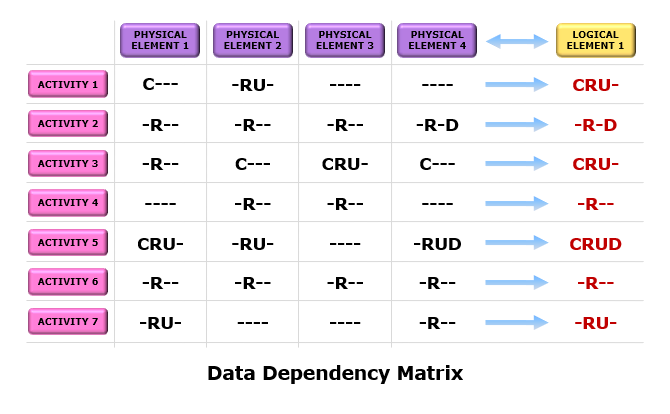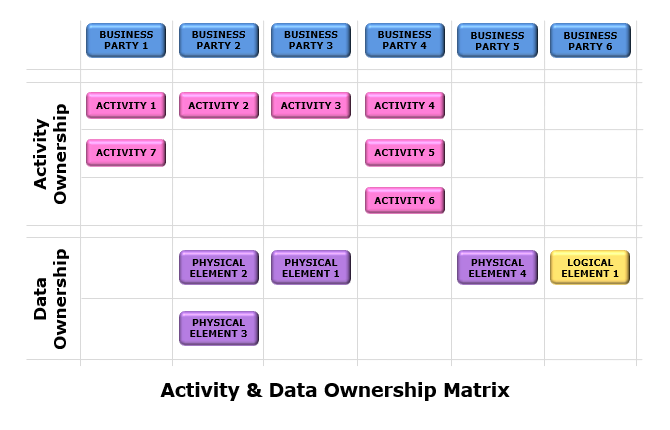Collaborative Change Management
One of the biggest issues with managing change in business systems is communicating a change to everyone whom it is likely to impact. A failure to do so increases the risk of creating disparities, either because the relevant logic isn’t fully understood, or because the change isn’t applied to all other systems which feature that logic.
Within the Change Management Model the assigning of activity & data ownership allows change to be managed collaboratively, so that resolving problems for some business parties will not create problems for others. Also, the inclusion of unique and persistent logical and physical references, plus the ability to translate subjective terms - e.g. entity & attribute names, activity descriptions - from one business area to another improves co-ordination and productivity in both the delivery and usage of business systems.
By generating a Data Dependency Matrix and an Activity & Data Ownership Matrix from the Change Management Model, all business parties who are likely to be affected by any change can be easily identified.
A Data Dependency Matrix shows how different activities depend on data – i.e. create, read, update or delete data in different physical (and logical) elements. The example below would be generated for a change to any or all of the four physical elements (Physical Element 1 to 4), which all map to the same logical element (Logical Element 1). The Data Dependency matrix shows that there are seven activities (Activity 1 to 7) which depend on these four physical elements. (For each activity the logical data dependency types - i.e. create, read, update or delete - are derived by aggregating the physical data dependency types across all four physical elements)…
 Given that there are no other logically equivalent physical elements in the enterprise, and no other dependent activities, the business parties responsible for validating this change can be identified by generating an Activity & Data Ownership Matrix…
Given that there are no other logically equivalent physical elements in the enterprise, and no other dependent activities, the business parties responsible for validating this change can be identified by generating an Activity & Data Ownership Matrix…
 So this change would first be communicated to the six ‘owners’ (Business Party 1 to 6); any of whom, as required, could generate a Physical Data Usage report to identify everyone who uses the four physical elements (Physical Element 1 to 4).
So this change would first be communicated to the six ‘owners’ (Business Party 1 to 6); any of whom, as required, could generate a Physical Data Usage report to identify everyone who uses the four physical elements (Physical Element 1 to 4).
